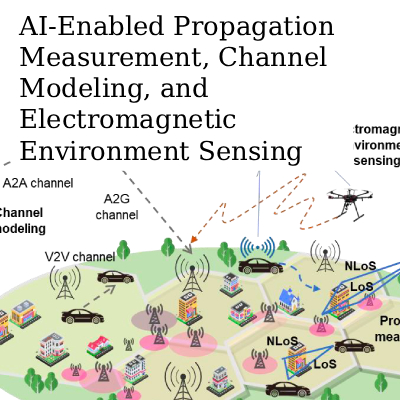IEEE OJAP welcomes contributions from across the antennas and propagation field, covering aspects from theory and design to applied engineering innovations, topical review, and perspective articles. The journal publishes papers on mature topics as well as on emerging fields, including those at the nexus of other engineering and science disciplines that are dependent upon antennas and propagation. IEEE OJAP is committed to supporting open and transparent research exchange and enabling authors to embrace best practices in data and code sharing.
The editorial process combines the rigor of peer-review with the speed of open access publishing, and ensures that all authors benefit from a timely and thorough feedback. With a submission to publication time of 4-6 weeks, articles are made available, without barriers to access, immediately upon acceptance, and receive direct exposure to 5 million unique monthly users of the IEEE Xplore® Digital Library.
The journal draws on the expert technical community to continue IEEE’s commitment to publishing the most highly-cited content. The Editor in Chief, Professor Zhongxiang Shen, works closely with an Advisory Board of pioneering contributors and a dedicated Editorial Board of distinguished scientists and engineers in antennas and propagation. The result is impactful content that can be used to advance science and accelerate technical innovation.
Why Open Access
Through IEEE OJAP, the IEEE AP-S fosters open science, expands the availability of options for authors and researchers, thus supporting their work and needs in terms of funding requirements, readership, research impact and academic recognition. IEEE OJAP supports authors in gaining maximum exposure for their published research, thus creating new standards in terms of authorship and readership. In IEEE OJAP, all articles are published under the Creative Commons attribution license, enabling authors to retain copyrights.
Scope
The IEEE Open Journal of Antennas and Propagation covers antennas, including analysis, design, development, measurement, standards, and testing; radiation, propagation, and the interaction of electromagnetic waves with discrete and continuous media; and applications and systems pertinent to antennas, propagation, and sensing, such as applied optics, millimeter-and sub-millimeter-wave techniques, antenna signal processing and control, radio astronomy, and propagation and radiation aspects of terrestrial and space-based communication, including wireless, mobile, satellite, and telecommunications at all frequencies.
The articles in this journal are peer-reviewed in accordance with the requirements set forth in the IEEE Publication Services and Products Board Operations Manual.
Each published article is reviewed by a minimum of two independent reviewers using a single-anonymous peer-review process, where the identities of the reviewers are not known to the authors, but the reviewers know the identities of the authors. Articles will be screened for plagiarism before acceptance.
The Article Processing Charge (APC) for papers submitted in 2024 is USD $1995 per article, plus applicable local taxes. The APC for papers submitted in 2025 is USD $2075 per article, plus applicable local taxes. IEEE members and Antennas and Propagation Society (AP-S) members receive 5% and 20% discounts, respectively.
These discounts cannot be combined and do not apply to undergraduate and graduate students. Information about IEEE's Low and Lower-middle Income Country Program is available here. Some institutions offer assistance for open access funding. Check our institutional partners list to see if yours is one.
Author Tools & Instructions
IEEE is committed to supporting authors and researchers with IEEE Author Tools including the IEEE Publication Recommender, IEEE Graphics Analyzer, LaTeX Analyzer and more. Discover the tools available at the IEEE Author Center.
The AP-S is regarded as a trusted and unbiased source of technical information for dialog and collaboration to advance technology within the computing community.














